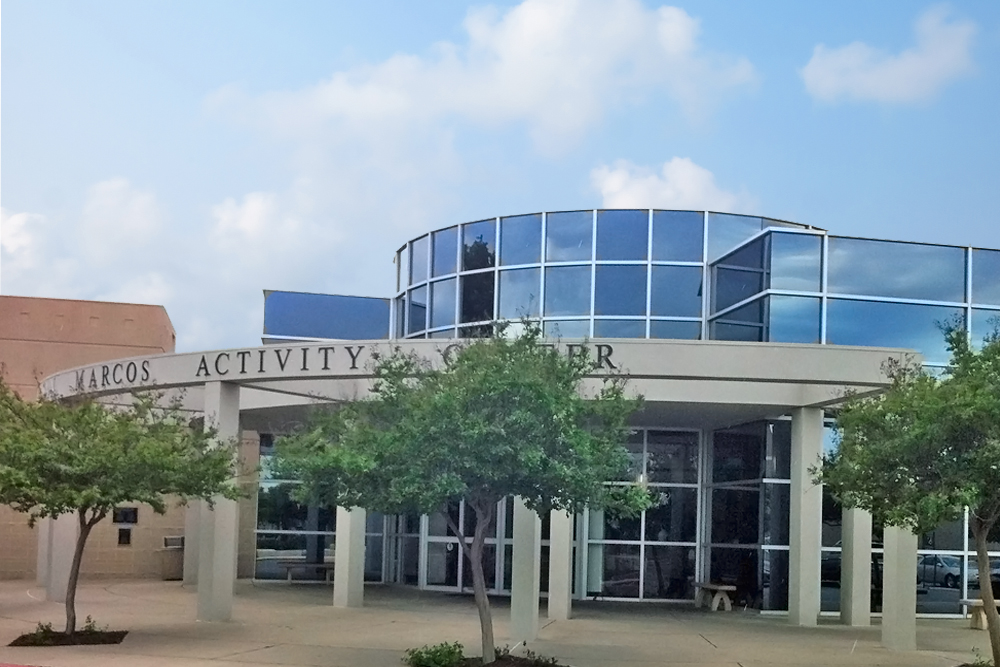Why Take Care of Texas Water
Texas is a beautiful state rich in diverse resources. As Texans, it is our job to make sure our state remains a beautiful and healthy place to live. To accomplish this goal, all Texans need to do their part. The Take Care of Texas campaign is designed to involve all Texans in simple changes that will help keep our air and water clean, conserve water and energy, reduce waste, and save individuals a little money in the process. For more information, please visitTakeCareOfTexas.org.
Water Conservation
Lawn and garden watering make up nearly 40 percent of total household water use during the summer. Finding ways to use less water will not only help conserve this precious resource, it will also save you money on your water bill.
Irrigate Efficiently
Much of the water applied to lawns and gardens is never absorbed by plants. The greatest waste of water results from applying it too rapidly or too often. Water applied too rapidly is lost as runoff, which may carry polluting fertilizers and pesticides to streams and lakes. Some water evaporates when it’s applied to bare, unmulched soil, or in the hot afternoon. Sprinkler systems offer an effective method for irrigation, if used properly. Make sure that sprinkler heads are adjusted to avoid watering sidewalks and driveways. Also, a properly adjusted sprinkler head sprays large drops of water instead of a fine mist, which is more susceptible to evaporation and wind drift. Drip irrigation and soaker hoses offer an efficient method for watering vegetables, ornamental and fruit trees, shrubs, vines, and container-grown plants. Drip irrigation slowly applies water to the soil by flowing, under low pressure, through emitters, bubblers, or spray heads placed at each plant. Water applied by drip irrigation is not likely to evaporate or run off. Soaker hoses require less equipment and are easier and less expensive to install than drip irrigation. A soaker hose is a porous hose that can be connected to an outside faucet, a garden hose, or a rain barrel and laid out along the base of the plants. The hose allows water to seep out along its length. For more information on irrigation practices, see Landscape Irrigation: A “Take Care of Texas”.
Avoid Overwatering
Watering too heavily or too often weakens your lawn and causes erosion and runoff pollution. Excess irrigation can also leach nutrients deep into the soil away from the plant roots, increasing the chances of polluting the groundwater. Similarly, runoff caused by excess irrigation can carry polluting fertilizers and pesticides to streams and lakes. Most lawns receive twice as much water as they require for a healthy appearance. Water should be applied to lawns infrequently, yet thoroughly. To know when it’s time to water your lawn, simply observe your grass. Wilting and discoloration are signs of water stress. At the first sign of wilting, you have 24 to 48 hours before damage to your lawn occurs. A general rule is to *Always comply with your water system’s water-use restrictions. water one inch, once a week.* An easy method for watering one inch is to place an empty 6-ounce tuna can on your lawn and stop watering when it is full. Watering infrequently but thoroughly also strengthens root systems, helping your lawn to efficiently use the water that’s stored in the soil.
Water in the Morning
Watering in the morning will save water from being evaporated by the midday heat. Watering in the morning will also help your plants stay healthy, since watering late in the evening or at night keeps leaves wet for an extended period of time, which increases the chances of disease and some pests.
Practice Grasscycling
Grasscycling refers to the practice of leaving grass clippings on the lawn to decompose into soil. Grasscycling will not only cut down on your watering needs, it will make your turf greener and tougher by preventing common turf diseases and reducing the need for lawn fertilizer. The key to grasscycling is to mow at the proper height and disperse the grass clippings evenly, so that they can work their way down to the soil. Mowing grass too short causes stress, discourages deep root growth, and results in rapid loss of soil moisture. Mow often enough so that each mowing removes no more than onethird of the grass blade. For example, if you set your cutting height at 2 inches, you should cut your grass before it’s more than 3 inches tall. When the mowed grass clippings remain on the yard, they can act as a slow-release lawn fertilizer, while also helping to retain soil moisture. This reduces the need for watering and can eliminate the need for fertilizer. This, in turn, helps to keep fertilizers out of storm drains and, as a result, out of rivers, lakes, and bays.
Try Composting and Mulching
Yard trimmings make up 20 percent of the waste generated by Texans each year. Instead of throwing them out with the garbage, recycle these materials by composting or mulching them. Mulch can consist of wood chips or shavings, leaves, or grass clippings, and serves to retain soil moisture, prevent erosion, suppress weeds, and protect plants from temperature changes. Composting is the controlled, accelerated decomposition of organic material such as yard trimmings, kitchen scraps, wood shavings, cardboard, and paper. Compost provides valuable nutrients when mixed into the soil, and can also make good mulch. By using mulch and compost on lawns and gardens, Texans could reduce the need for outdoor watering by 30 to 60 percent. For more information, see Mulching and Composting: A “Take Care of Texas” Guide (GI-36) at.
Keep Our Water Clean
The quality of water is improving statewide, thanks to efforts by cities, industries, and individuals. However, we all need to do our part to help keep our lakes, rivers, and streams clean for their intended uses—whether it’s for swimming, fishing, or drinking.
Reduce Runoff
Rainfall runoff pollutes water by carrying soil, fertilizers, and pesticides to nearby streams. Composting and grasscycling are both great ways to help reduce runoff pollution, because they prevent erosion, increase your soil’s ability to absorb and retain water, and reduce the need for fertilizers.
Use Fewer and Better Pesticides and Fertilizers
Perhaps assuming that more is better, residential users apply more pounds per acre of synthetic pesticides and fertilizers than farmers do. However, more is not better, since overwatering (or a rainstorm) can wash fertilizer away— wasting your money and contaminating nearby waterways with pollution. There are less toxic, even natural, substitutes that are just as effective. If you do choose to use pesticides and fertilizers, however, it is very important to your health and the environment to always apply the product according to the label’s directions, use only the recommended amount, and adjust your watering accordingly. *Always comply with your water system’s water-use restrictions.
Collect and Use Rainwater
By collecting rainwater and using it on your lawn, plants, flowers, trees, and shrubs, you can save water and money. In fact, by collecting rainwater from just 10 percent of the residential roof area in Texas, we could conserve over 30 billion gallons of water annually. Using collected rainwater has three major advantages: it reduces runoff pollution, it can reduce your utility bills (the water is free!), and it is healthier for plants than treated water.
Systems for harvesting rainwater can be as simple as placing a barrel beneath a gutter downspout to collect a small amount of water for use on gardens and plants. Rain barrels are simple to install and can be made easily at home.
To collect more rainwater, consider installing a large system using cisterns, which can collect thousands of gallons of water. For information on constructing a larger rainwater-harvesting system, see Rainwater Harvesting (GI-404, reprinted courtesy of the Texas A&M AgriLife Extension Service)





